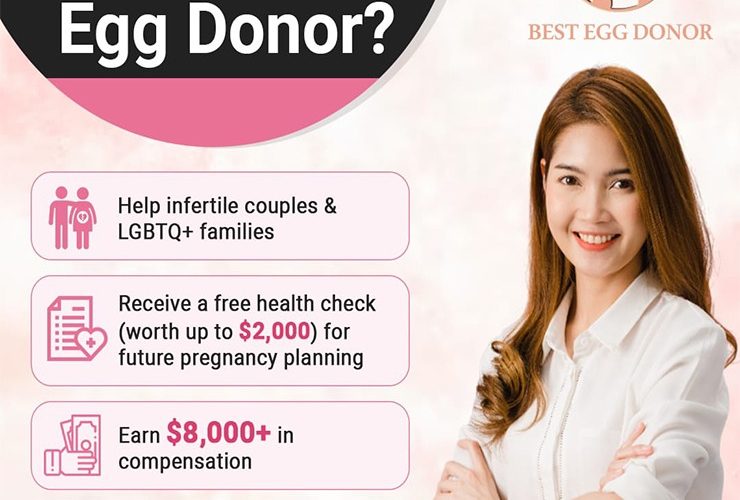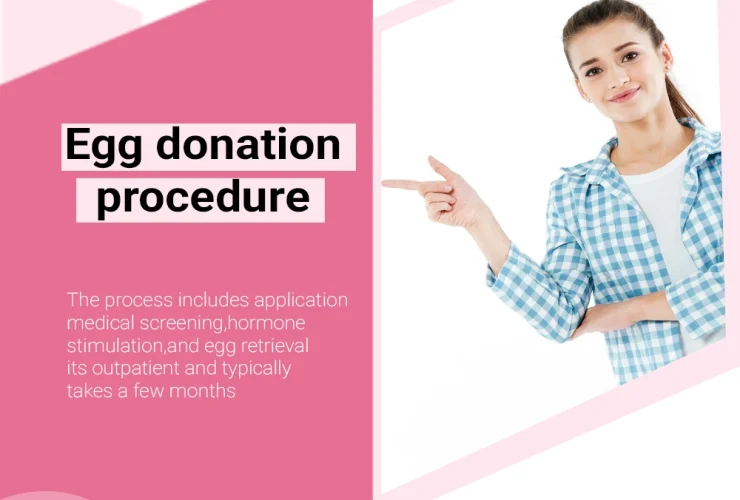This choice entails consulting with medical professionals, the moral dimensions of this decision, as well as the financial reward that the donors will receive upon egg donation. Physicians specializing in fertility treatment, administrators of fertility clinics, and government agencies promoting fertility health have to be knowledgeable of the egg donor compensation. Donors usually receive about 5000 to 15 000 dollars per cycle, and the pay is subject to numerous factors.
Getting eggs involves more time than sperm or plasma, requiring patients to be engaged for 3-6 months with:
- Injecting myself daily with hormones for about 10-14 days
- Transvaginal ultrasounds (5-8 monitoring appointments)
- Surgical retrieval (20-30 minutes under sedation)
- Recovery period (1-2 weeks of restricted activity)
The American Society for Reproductive Medicine (ASRM) firmly positions compensation for donating eggs for money as reimbursement solely for a donor’s “time, inconvenience, and physical burden” – explicitly not payment for the eggs. This ethical standard safeguards the industry’s integrity while recognizing donors’ contributions through egg donation for cash.
Key Factors Influencing Egg Donation Pay
1. Geographic Variations & Market Dynamics
Urban Premium Effect:
- Major metropolitan areas (NYC, SF, Boston) offer $10,000-$15,000 due to high demand and elevated operational costs.
- Secondary markets (Austin, Seattle) average $8,000-$12,000.
- Rural clinics may cap at $6,000 but offer lower living costs.
Pro Insight: “Coast-to-coast” donors can earn 20% more by partnering with agencies coordinating travel.
2. Donor Profile Premiums
Some characteristics increase compensation in addition to the minimum requirements (21-29 age, bmi <28, non-smoker):
- Academic Pedigree: The Ivy Leaguers earn bonuses of between 1000-5000 dollars.
- Rare Genetics: Donors who are treated as Ashkenazi Jews, East Asian, RH-negative blood are paid 15-25 percent more.
- Proven Fertility:Where clients have provided successful donations or live birth in the past by 20-30 %.
- Physical Attributes: Certain height/eyed colour requests can also come up with extra costs of #500 to #2,900.
3. Agency vs. Clinic Direct Models
- Full-Service Agencies (e.g., Best Egg Donor): Web-based agencies that make available the typical, uniform compensation ($8k -$14k), psychological support and legal coordinating.
- Clinic Direct Programs: same as above but may pay a bit less ($7k12k), with integrated medical oversight .
- Red Flag Alert: Agencies posting over 20,000 dollars tend to go against ethical practices.
The Compensation Timeline: Step-by-Step Financial Flow
Phase 1: Screening & Qualification (Uncompensated)
- 8-12 hours of assessments (genetic panels, psychological interviews, family medical history)
- Industry standard: No payment until medical clearance
Phase 2: Stimulation & Monitoring ($500-$1,500 Stipend)
- Partial reimbursement for:
- Commuting costs ($0.58/mile)
- Childcare during appointments
- Wages lost for hourly workers
Phase 3: Retrieval & Disbursement (Primary Compensation)
- 1/2 way transfer of 5-15k wired within 24-72 hours after the procedure
- IRS Form 1099- Tax documentation
Phase 4: Ancillary Payments
- Repeat Cycles: 2 more donation 15 percent more; 3rd and up 50 per cent or up to 20,000 dollars
- Travel Packages 750-3000 (i.e. flights, hotels, per diem)
- Complication Bonuses: Extra problems with severe cases of OHSS will add another thousand and five thousand dollars.
Ethical Architecture: Navigating Compensation Complexities
The Legal Tightrope
According to the FDA regulations, human tissue sale is expressly forbidden. Legitimate programs structure payments as:
- Time reimbursement ($25-$50/hour for appointments)
- Discomfort compensation (pain/incontinence allowances)
- Expense coverage (medication copays, maternity clothing)
Best Practice: Clinics like those vetted at Best Egg Donor use fertility-specialized attorneys to draft ASRM-compliant contracts.
Socioeconomic Safeguards
To prevent exploitation of vulnerable populations:
- Income Caps: Some programs limit donors earning <$75k/year
- Cycle Limits: ASRM recommends ≤6 lifetime donations
- Cooling-Off Periods: Mandatory 2-3 month breaks between cycles
- Psychological Vetting: Screening for financial desperation
Medical Realities: Beyond the Dollar Amounts
Quantifiable Physical Risks
| Risk Factor | Incidence Rate | Compensation Coverage |
| Ovarian Hyperstimulation (OHSS) | 1-5% | Full medical treatment + $1k-$5k bonus |
| Pelvic Infection | <1% | 100% antibiotics/surgery |
| Bleeding/Organ Injury | 0.1% | Emergency care + $2k-$10k compensation |
Hidden Value in Non-Monetary Perks
- Comprehensive Genetic Testing ($500-$1,200 value)
- Fertility Preservation Discounts (50-70% off egg freezing)
- Long-Term Health Monitoring (free annual gynecological exams)
Case Study: Dr. Elena Rodriguez, Medical Director at Pacific Fertility, observes: “For our donors, the lifelong health knowledge gained is often valued equally alongside the egg donation pay. For example, learning she was a carrier for Tay-Sachs directly influenced one donor’s family planning.”
Strategic Compensation Maximization
1. Agency Selection Criteria
- Verify SART.org success rates (>40% live births per transfer)
- Demand transparent fee breakdowns (avoid hidden “administrative cuts”)
- Confirm independent legal representation
2. Negotiation Levers
- Travel Logistics: Request direct flight bookings over reimbursements
- Lost Wages: Secure written guarantees for 5-10 recovery days
- Ancillary Costs: Negotiate coverage for acupuncture (proven to reduce OHSS risk)
3. Reputation Capitalization
- Anonymous vs. Open-ID: Open donations pay 10-15% more
- Specialized Platforms: LGBTQ+-focused or ethnic-specific programs offer premiums
- Art Program Participation: Donors for celebrity recipients may earn $25,000+
Pro Tip: Seasoned donors use platforms like Best Egg Donor to track market rates across 50+ clinics in real-time.
The Future Financial Landscape
Economic Drivers
- Soaring demand (600% increase in single fathers/same-sex couples since 2010)
- Delayed parenthood (average recipient age now 42 vs. 37 in 2000)
- Insurance expansion (19 states now mandate IVF coverage)
Emerging Payment Models
- Egg Banking Stipends: $3,000-$8,000 for frozen donations
- Genetic Premiums: $2,000+ bonuses for BRCA-negative status
- Hybrid Programs: Split donations (50% eggs to recipient/50% to bank) with dual payments
Conclusion: An Informed Decision
Egg donation provides a deep commitment (donation of eggs) in exchange of significant compensation (hrs 5,000 -15,000). Although the amount paid during the egg donation indicates the expenditure of time, effort, and medical procedure, it is not easy money. Surf the internet to find a solid program such as BestEggDonor.com and review the physical, emotional and ethical aspects before making the final decision on whether to sell your eggs or not.
FAQs: Egg Donation Compensation Explained
- How much do you get paid to give an egg?
Compensation covers the entire cycle, not per egg. First-time donors typically earn $5,000-$10,000, while experienced donors can receive $10,000-$15,000+. Location, agency, and your qualifications heavily influence your egg donation pay
- Is selling eggs worth it?
It’s compensation for time/effort, not “selling.” Whether donating eggs for money is worthwhile is deeply personal. Weigh the substantial financial gain against the significant physical commitment, time required, and emotional considerations involved.
- Is a donor egg my baby?
Biologically, the child carries the donor’s genes. Legally and parentally, the child is 100% the baby of the intended parents who raise them. Donors sign away all parental rights and obligations before donation.






